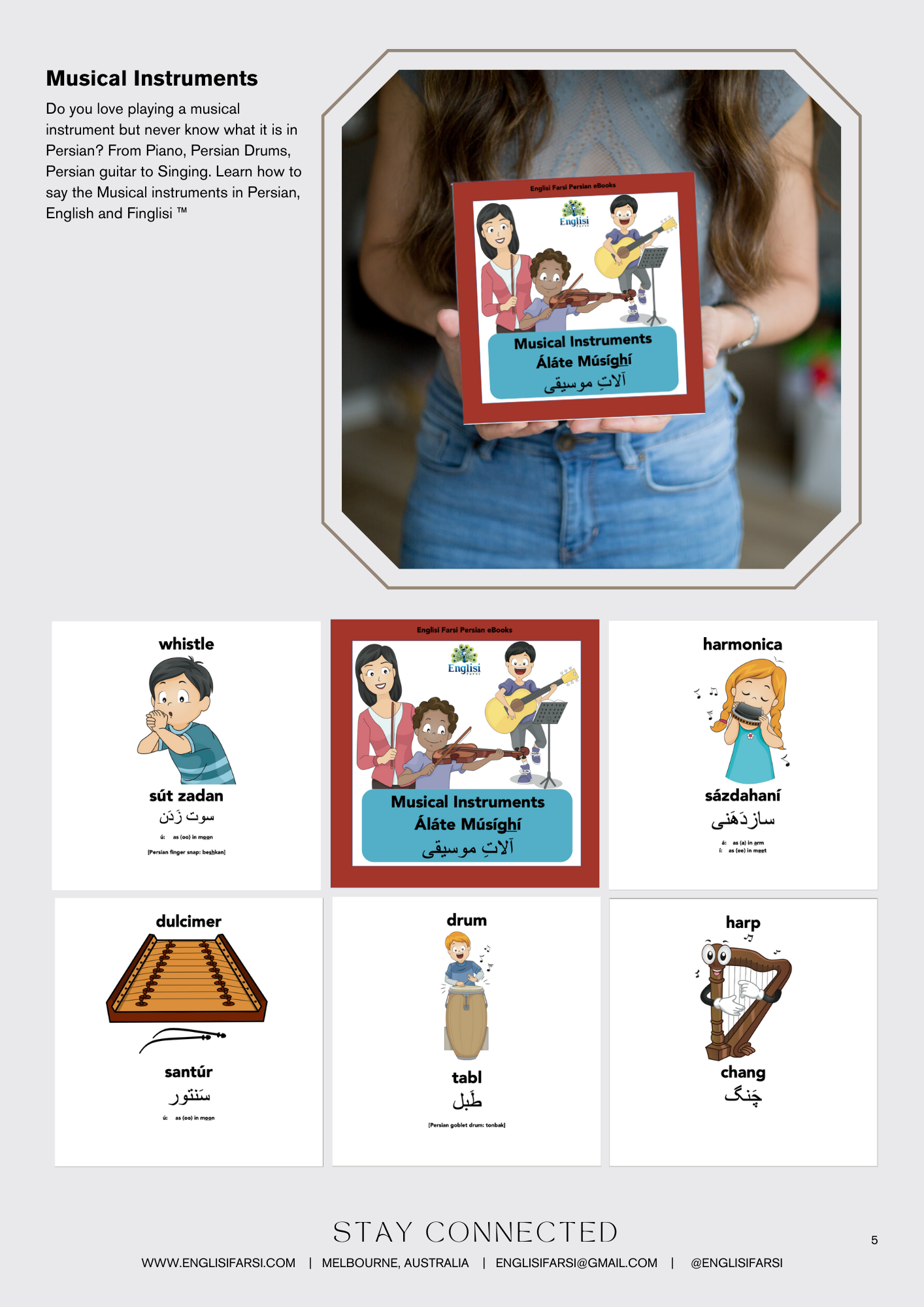Persian Musical Instruments
Persian Musical Instruments
Children love playing and learning the vocabulary to help make sense of the world around them. You can do this very easily in Persian. The easiest and simplest ways to introduce your child to learning Persian via simultaneous acquisition).

Music is a universal language that transcends borders and cultures. Introducing children to different musical instruments not only ignites their passion for music but also exposes them to diverse cultural traditions. In this post, we will explore the joy of learning the names of musical instruments in Persian. By expanding their vocabulary in this domain, we can deepen their connection to Persian culture while fostering a love for music.
-
Start with Common Instruments: Begin by introducing children to common musical instruments with Persian names. Teach them the Persian names for instruments like the guitar (sítár), piano (píáno), drum (tabl), flute (ney), and violin (víolen). Use visual aids or actual instruments to engage their senses and make the learning experience interactive.
-
Explore Traditional Persian Instruments: Expand their knowledge by introducing them to traditional Persian musical instruments. Teach them the Persian names for instruments like the santoor (santúr), tar (tar), daf (daf), tombak (tombak), and setar (setar). Share the unique characteristics and sounds of these instruments, showcasing the rich musical heritage of Iran.
-
Listen to Persian Music: Expose children to Persian music that prominently features various instruments. Play Persian songs or instrumental pieces that highlight specific instruments. Encourage them to identify the instruments they have learned and associate their Persian names with the sounds they hear. Try famous artists like Ebi, Googoosh.
-
Create a Musical Instrument Gallery: Set up a musical instrument gallery in your home. Display pictures or small replicas of different instruments with their corresponding Persian names. Encourage children to explore the gallery and reinforce their learning by identifying the instruments and naming them in Persian.
-
Sing Songs and Play Along: Engage children in singing Persian songs that mention specific instruments. Encourage them to play along with simple rhythm instruments like tambourines, shakers, or hand drums while singing. This hands-on experience allows them to connect the Persian names of instruments with their sounds and melodies.
-
Virtual Instrument Exploration: Take advantage of technology by exploring virtual instrument apps or online resources that allow children to virtually play different instruments. Encourage them to experiment and discover the sounds of each instrument while reinforcing their Persian names.
-
Cultural Context and Stories: Share stories and anecdotes about Persian musical traditions and the significance of certain instruments. Discuss how specific instruments are used in traditional Persian celebrations or ceremonies. Connect the learning of musical instruments with the rich cultural heritage of Iran.
Conclusion: Learning the names of musical instruments in Persian opens up a world of cultural exploration and musical appreciation for children. By expanding their vocabulary in this domain, we cultivate their love for music while fostering a deeper connection to Persian culture. Let's embark on this melodic journey together, celebrating the beauty of Persian music and nurturing a lifelong passion for diverse musical expressions.



















